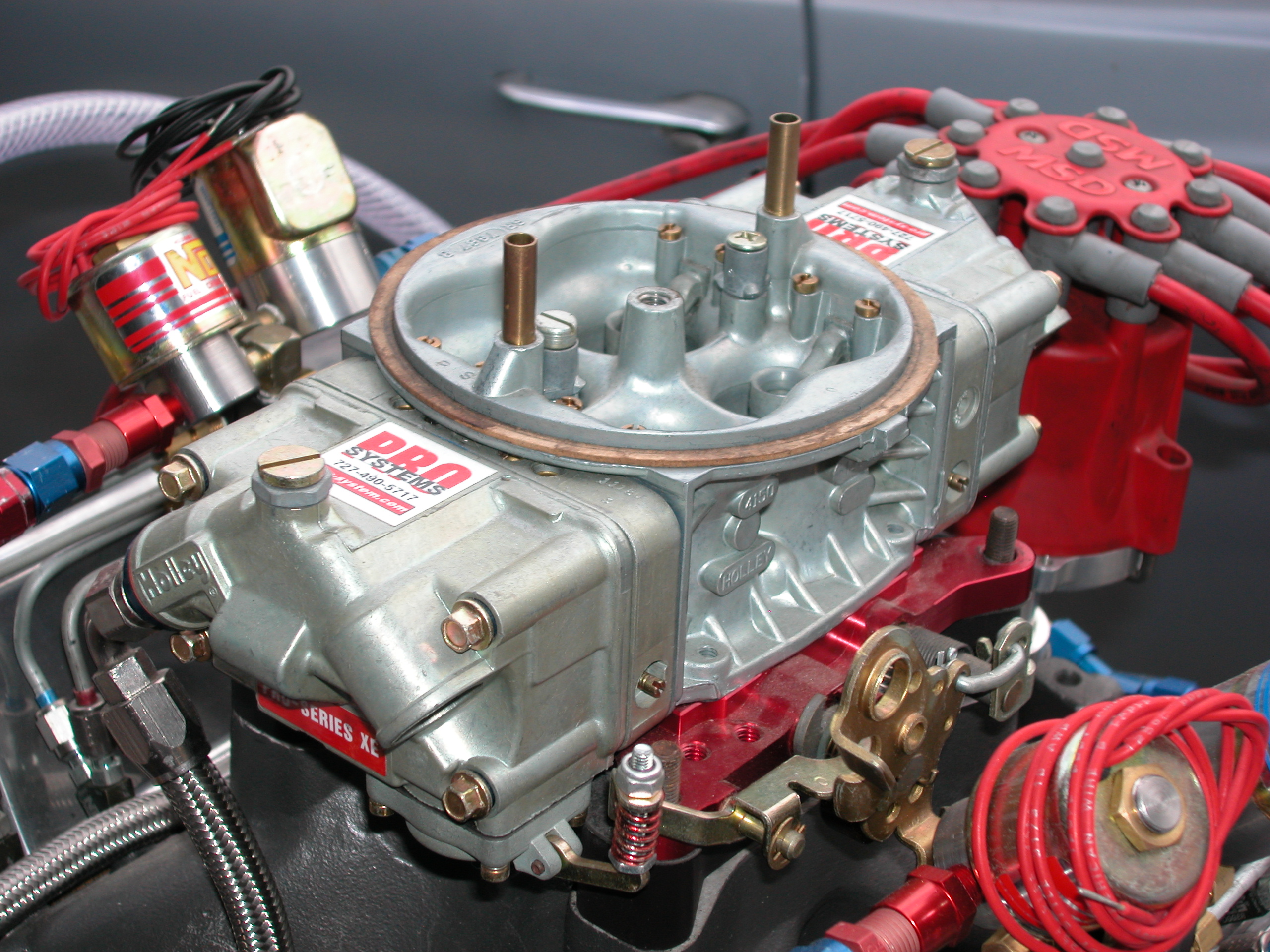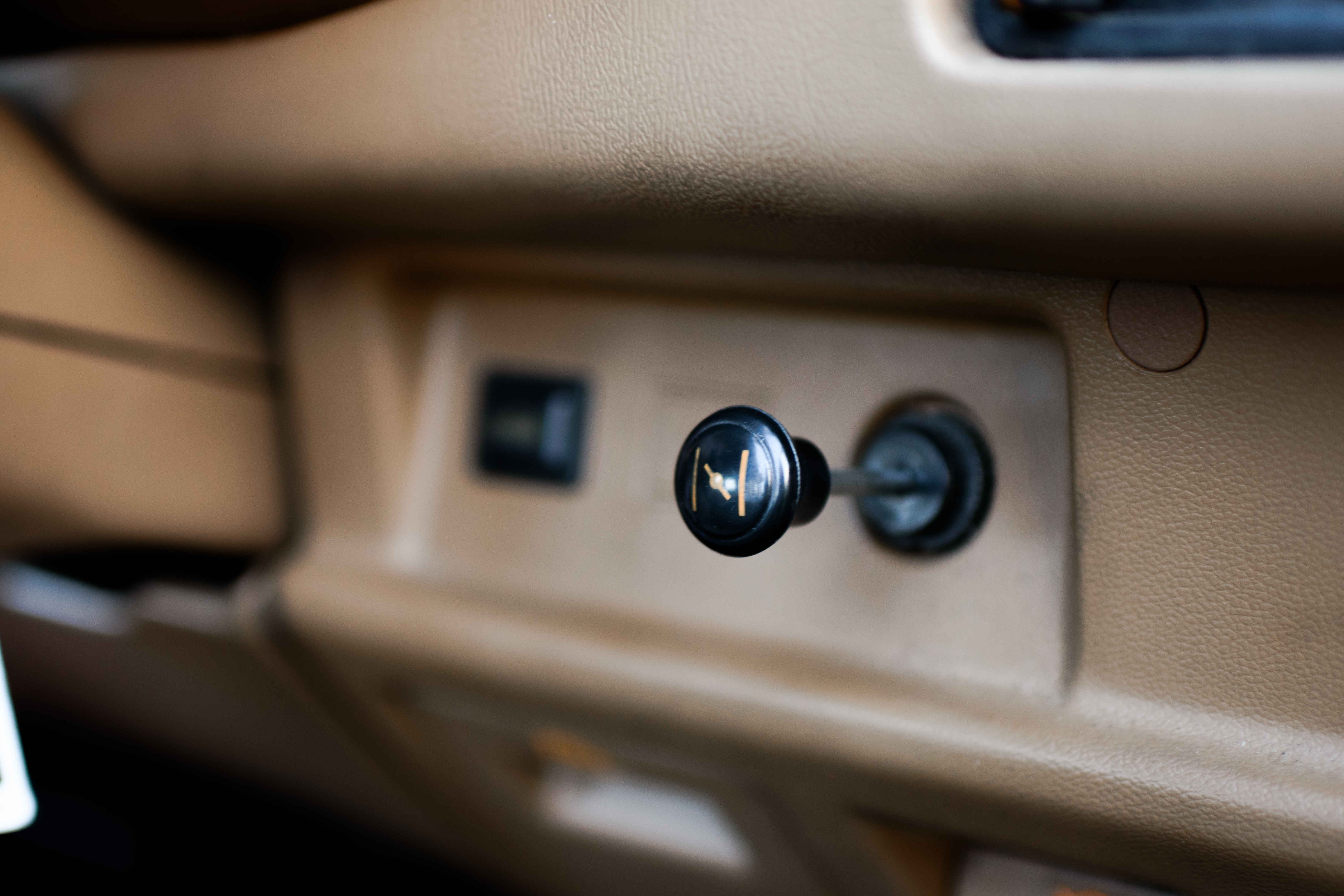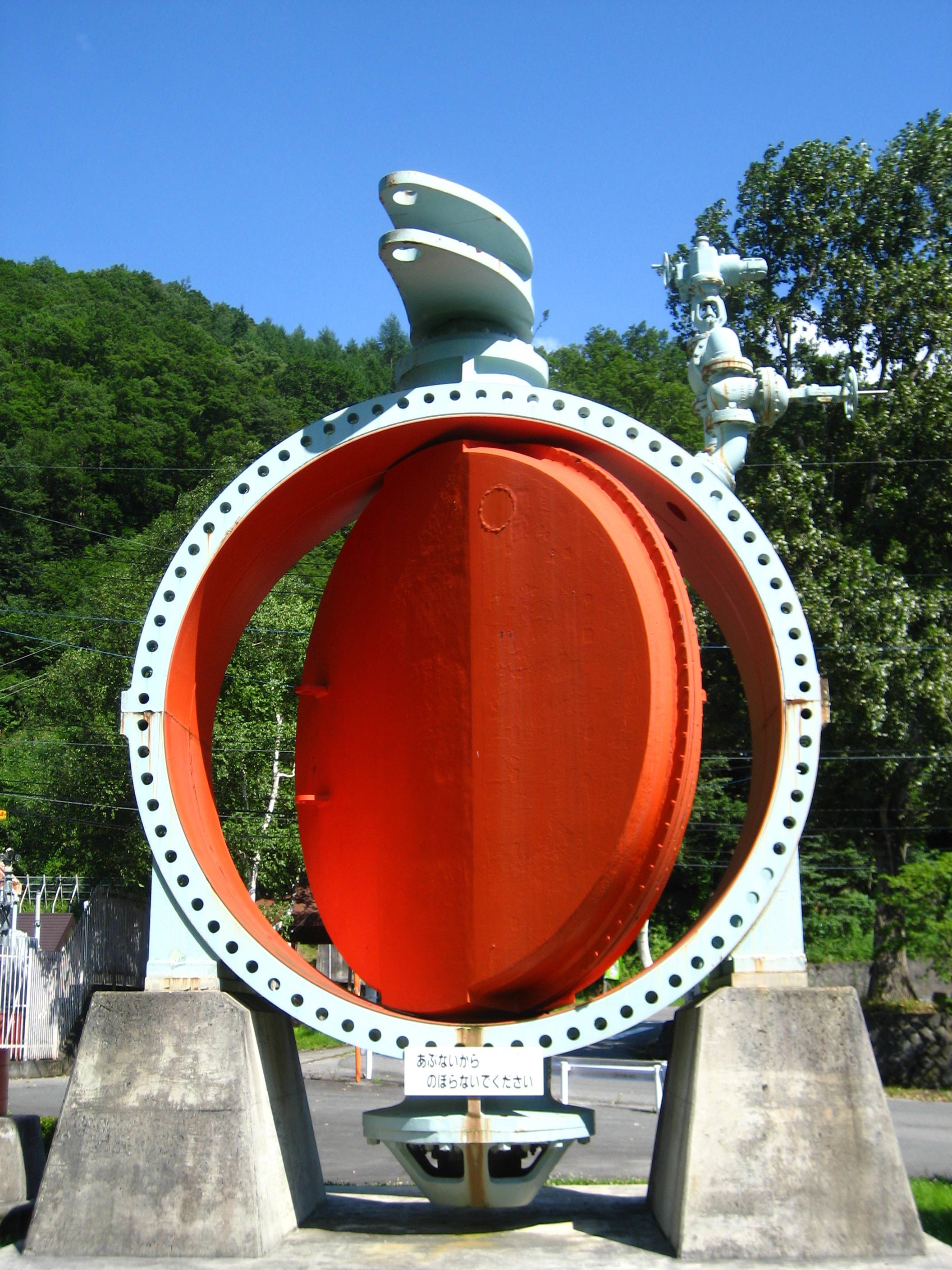|
Carbureted
A carburetor (also spelled carburettor) is a device used by an internal combustion engine to control and mix air and fuel entering the engine. The primary method of adding fuel to the intake air is through the venturi tube in the main metering circuit, however various other components are also used to provide extra fuel or air in specific circumstances. Since the 1990s, carburetors have been largely replaced by fuel injection for cars and trucks, however carburetors are still used by some small engines (e.g. lawnmowers, generators and concrete mixers) and motorcycles. Diesel engines have always used fuel injection instead of carburetors. Etymology The name "carburetor" is derived from the verb ''carburet'', which means "to combine with carbon," or in particular, "to enrich a gas by combining it with carbon or hydrocarbons." Thus a carburetor mixes intake air with hydrocarbon-based fuel, such as petrol or autogas (LPG). The name is spelled "carburetor" in American English and ... [...More Info...] [...Related Items...] OR: [Wikipedia] [Google] [Baidu] |
Flooded Engine
A flooded engine is an internal combustion engine that has been fed an excessively rich air-fuel mixture that cannot be ignited. This is caused by the mixture exceeding the upper explosive limit for the particular fuel. An engine in this condition will not start until the excessively rich mixture has been cleared. It is also possible for an engine to stall from a running state due to this condition. Engine flooding was a common problem with carbureted cars, but newer fuel-injected ones are immune to the problem when operating within normal tolerances. Flooding usually occurs during starting, especially under cold conditions or because the accelerator has been pumped. It can also occur during hot starting; high temperatures may cause fuel in the carburetor float chamber to evaporate into the inlet manifold, causing the air/fuel mixture to exceed the upper explosive limit. High temperature fuel may also result in a vapor lock, which is unrelated to flooding but has a similar sympt ... [...More Info...] [...Related Items...] OR: [Wikipedia] [Google] [Baidu] |
Throttle
A throttle is the mechanism by which fluid flow is managed by constriction or obstruction. An engine's power can be increased or decreased by the restriction of inlet gases (by the use of a throttle), but usually decreased. The term ''throttle'' has come to refer, informally, to any mechanism by which the power or speed of an engine is regulated, such as a car's accelerator pedal. What is often termed a ''throttle'' (in an aviation context) is also called a thrust lever, particularly for jet engine powered aircraft. For a steam locomotive, the valve which controls the steam is known as the regulator. Internal combustion engines In an internal combustion engine, the throttle is a means of controlling an engine's power by regulating the amount of fuel or air entering the engine. In a motor vehicle the control used by the driver to regulate power is sometimes called the throttle, accelerator, or gas pedal. For a gasoline engine, the throttle most commonly regulates the amount ... [...More Info...] [...Related Items...] OR: [Wikipedia] [Google] [Baidu] |
Carburetor
A carburetor (also spelled carburettor) is a device used by an internal combustion engine to control and mix air and fuel entering the engine. The primary method of adding fuel to the intake air is through the venturi tube in the main metering circuit, however various other components are also used to provide extra fuel or air in specific circumstances. Since the 1990s, carburetors have been largely replaced by fuel injection for cars and trucks, however carburetors are still used by some small engines (e.g. lawnmowers, generators and concrete mixers) and motorcycles. Diesel engines have always used fuel injection instead of carburetors. Etymology The name "carburetor" is derived from the verb ''carburet'', which means "to combine with carbon," or in particular, "to enrich a gas by combining it with carbon or hydrocarbons." Thus a carburetor mixes intake air with hydrocarbon-based fuel, such as petrol or autogas (LPG). The name is spelled "carburetor" in American Eng ... [...More Info...] [...Related Items...] OR: [Wikipedia] [Google] [Baidu] |
Inlet Manifold
In automotive engineering, an inlet manifold or intake manifold (in American English) is the part of an engine that supplies the fuel/ air mixture to the cylinders. The word ''manifold'' comes from the Old English word ''manigfeald'' (from the Anglo-Saxon ''manig'' anyand ''feald'' epeatedly and refers to the multiplying of one (pipe) into many.manifold, (adv.) "in the proportion of many to one, by many times". AD1526 ''Oxford English Dictionary'', In contrast, an exhaust manifold collects the exhaust gases from multiple cylinders into a smaller number of pipes – often down to one pipe. The primary function of the intake manifold is to ''evenly'' distribute the combustion mixture (or just air in a direct injection engine) to each intake port in the cylinder head(s). Even distribution is important to optimize the efficiency and performance of the engine. It may also serve as a mount for the carburetor, throttle body, fuel injectors and other components of the engi ... [...More Info...] [...Related Items...] OR: [Wikipedia] [Google] [Baidu] |
Thermostat
A thermostat is a regulating device component which senses the temperature of a physical system and performs actions so that the system's temperature is maintained near a desired setpoint. Thermostats are used in any device or system that heats or cools to a setpoint temperature. Examples include building heating, central heating, air conditioners, HVAC systems, water heaters, as well as kitchen equipment including ovens and refrigerators and medical and scientific incubators. In scientific literature, these devices are often broadly classified as thermostatically controlled loads (TCLs). Thermostatically controlled loads comprise roughly 50% of the overall electricity demand in the United States. A thermostat operates as a "closed loop" control device, as it seeks to reduce the error between the desired and measured temperatures. Sometimes a thermostat combines both the sensing and control action elements of a controlled system, such as in an automotive thermostat. ... [...More Info...] [...Related Items...] OR: [Wikipedia] [Google] [Baidu] |
Dashboard
For business applications, see Dashboard (business). A dashboard (also called dash, instrument panel (IP), or fascia) is a control panel set within the central console of a vehicle or small aircraft. Usually located directly ahead of the driver (or pilot), it displays instrumentation and controls for the vehicle's operation. Etymology Originally, the word ''dashboard'' applied to a barrier of wood or leather fixed at the front of a horse-drawn carriage or sleigh to protect the driver from mud or other debris "dashed up" (thrown up) by the horses' hooves. The first known use of the term (hyphenated as ''dash-board'', and applied to sleighs) dates from 1847. Commonly these boards did not perform any additional function other than providing a convenient handhold for ascending into the driver's seat, or a small clip with which to secure the reins when not in use. When the first "horseless carriages" were constructed in the late 19th century, with engines mounted beneath the ... [...More Info...] [...Related Items...] OR: [Wikipedia] [Google] [Baidu] |
Choke Valve
In internal combustion engines with carburetors, a choke valve or choke modifies the air pressure in the intake manifold, thereby altering the air–fuel ratio entering the engine. Choke valves are generally used in naturally aspirated engines to supply a richer fuel mixture when starting the engine. Most choke valves in engines are butterfly valves mounted upstream of the carburetor jet to produce a higher partial vacuum, which increases the fuel draw. In heavy industrial or fluid engineering contexts, including oil and gas production, a choke valve or choke is a particular design of valve with a solid cylinder placed inside another slotted or perforated cylinder. Carburetor A choke valve is sometimes installed in the carburetor of internal combustion engines. Its purpose is to restrict the flow of air, thereby enriching the fuel-air mixture while starting the engine. Depending on engine design and application, the valve can be activated manually by the operator of the eng ... [...More Info...] [...Related Items...] OR: [Wikipedia] [Google] [Baidu] |
Cold Start (automotive)
A cold start is an attempt to start a vehicle's engine when it is cold, relative to its normal operating temperature, often due to normal cold weather. A cold start situation is commonplace, as weather conditions in most climates will naturally be at a lower temperature than the typical operating temperature of an engine. Causes of cold starts Cold starts are more difficult than starting a vehicle that has been run recently (typically between 90 minutes and 2 hours). More effort is needed to turn over a cold engine for multiple reasons: * The engine compression is higher as the lack of heat makes ignition more difficult * Low temperatures cause engine oil to become more viscous, making it more difficult to circulate the oil. * Air becomes more dense the cooler it is. This affects the air-fuel ratio, which in turn affects the flammability of the mixture. Solutions to cold starting The problem of cold starting has been greatly reduced since the introduction of engine s ... [...More Info...] [...Related Items...] OR: [Wikipedia] [Google] [Baidu] |
Car Controls
Car controls are the components in automobiles and other powered road vehicles, such as trucks and buses, used for driving and parking. While controls like steering wheels and pedals have existed since the invention of cars, other controls have developed and adapted to the demands of drivers. For example, manual transmissions became less common as technology relating to automatic transmissions became advanced. Earlier versions of headlights and signal lights were fueled by acetylene or oil. Acetylene was preferred to oil, because its flame is resistant to both wind and rain. Acetylene headlights, which gave a strong green-tinted light, were popular until after World War I; even though the first electric headlights were introduced in 1898 (and those were battery-powered), it wasn't until high-wattage bulbs and more powerful car electrical generating systems were developed in the late 1910s that electric lighting systems entirely superseded acetylene. Steering The first automob ... [...More Info...] [...Related Items...] OR: [Wikipedia] [Google] [Baidu] |
Butterfly Valve
A butterfly valve is a valve that isolates or regulates the flow of a fluid. The closing mechanism is a disk that rotates. Principle of operation Operation is similar to that of a ball valve, which allows for quick shut off. Butterfly valves are generally favored because they cost less than other valve designs, and are lighter weight so they need less support. The disc is positioned in the center of the pipe. A rod passes through the disc to an actuator on the outside of the valve. Rotating the actuator turns the disc either parallel or perpendicular to the flow. Unlike a ball valve, the disc is always present within the flow, so it induces a pressure drop, even when open. A butterfly valve is from a family of valves called quarter-turn valves. In operation, the valve is fully open or closed when the disc is rotated a quarter turn. The "butterfly" is a metal disc mounted on a rod. When the valve is closed, the disc is turned so that it completely blocks off the passageway. Whe ... [...More Info...] [...Related Items...] OR: [Wikipedia] [Google] [Baidu] |




.png)


